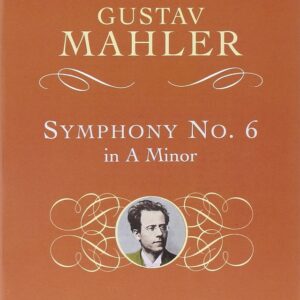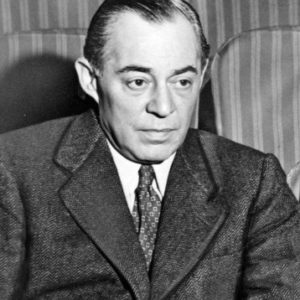GRAMOPHONE: From Where I Sit – August 2020
 In June I reviewed – none too favourably – an account of Mahler’s tragic and prophetic Sixth Symphony from the Essen Philharmonic Orchestra under their General Music Director Tomáš Netopil which was the third recording in recent times (the others being Pappano and Currentzis) to favour the original ordering for the inner movements: Scherzo/ Andante. Netopil’s decision to do so was especially telling since it was in Essen that the work’s world premiere took place in 1906 under the composer’s direction – but with the middle movements reversed. So what happened between the dry-run of the symphony which took place in Vienna prior to Essen – in the presence of none other than Richard Strauss – and that world premiere? Why the change of heart?
In June I reviewed – none too favourably – an account of Mahler’s tragic and prophetic Sixth Symphony from the Essen Philharmonic Orchestra under their General Music Director Tomáš Netopil which was the third recording in recent times (the others being Pappano and Currentzis) to favour the original ordering for the inner movements: Scherzo/ Andante. Netopil’s decision to do so was especially telling since it was in Essen that the work’s world premiere took place in 1906 under the composer’s direction – but with the middle movements reversed. So what happened between the dry-run of the symphony which took place in Vienna prior to Essen – in the presence of none other than Richard Strauss – and that world premiere? Why the change of heart?
These have become vexed questions among committed Mahlerians over the years and everyone, musicologists and nerds alike, have held true to their preference. Fair enough. It’s a musical and aesthetic choice regardless of the evidence which exists in favour of either option. But I wanted to lend some clarity and jump on that soap-box one more time. In 1963 the Critical Edition of the score adhered to the original order – Scherzo/Andante – but then in 2004 the Kaplan Foundation (that is the late Gilbert Kaplan – thereby hangs another tale) made a compelling case for the Essen revision and the new Critical Edition followed suit. At the forefront of Kaplan’s evidence was the fact that Mahler never again reverted to the original ordering in his lifetime. Not true.
But consider for a moment just how daring the original conception was – the scherzo as a developing variant, a distorted mirror-image, of the first movement. The relentless advance of A minor defiantly achieving A major in the final moments of the first movement only to be pitched back into the minor with the scherzo’s driving incessancy but now with an even uglier limp in its gait. All that connecting tissue is lost when these two movements, like Siamese Twins, are separated. So when Strauss made light of the work’s unremitting grimness following that Vienna try-out is it possible that Mahler simply lost his nerve and opted for the more obvious, less extreme, option?
It is true that the Andante’s E-flat major is at farthest remove from the A major at the close of the first movement offering a telling remoteness by contrast – but all my musical sensibilities scream for the original ordering and I cannot imagine a Bernstein or a Tennstedt being persuaded otherwise. Indeed when I visited Klaus Tennstedt to talk Mahler at his home in Kiel back in the 80’s he thumped the table in that way he had of punctuating passionately held views when I dared broach the question of the alternative ordering.
But more persuasive still was Mahler’s biographer Henri-Louis de La Grange who wrote to me following my review of Simon Rattle’s CBSO recording of the Sixth (originally spread over two CDs so you couldn’t ‘re-programme’ his choice of the Andante/Scherzo ordering!) and was himself unequivocal about Mahler’s final preference. What’s more he was in possession of a handbill which proved conclusively that Mahler did in fact perform the Sixth in its original ordering before he left us. Case closed? Each to his own, I say.
You May Also Like

RODGERS REVEALED
01/06/2016
GRAMOPHONE Review: Broadway – Renée Fleming, BBC Concert Orchestra/Fisher
02/01/2019

